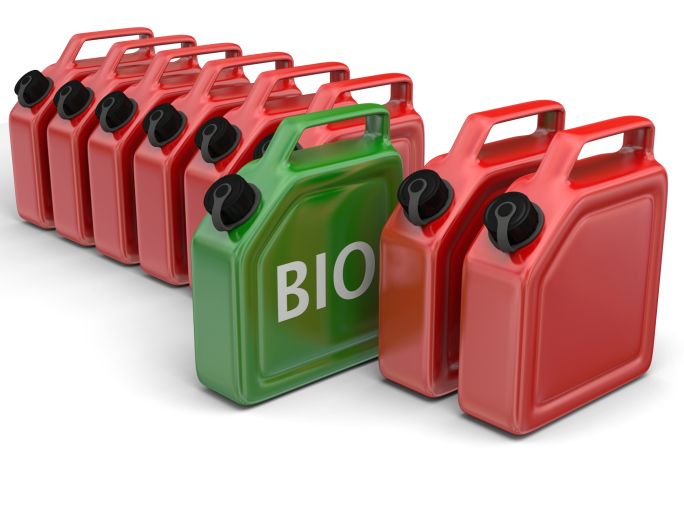
The Energy Independence and Security Act of 2007 mandated production and blending of 18.15 billion gallons of biofuels in the U.S. motor fuel supply for 2014. Of that total, 14.4 billion gallons was slated to be corn-based ethanol. The EPA’s proposed rules cut the total amount of required renewable biofuels to 15.21 billion gallons, of which 12.7 billion to 13.2 billion gallons would be corn-based ethanol.
When the 2007 law was enacted, the Energy Information Administration (EIA) estimated that demand for gasoline would reach 154 billion gallons in 2014. The most recent estimate sets demand at just 133 billion gallons.
That means that the mandated supply total of 15.21 billion gallons would exceed 10% of all the motor fuel expected to be sold in the U.S. next year. Thus refiners are faced with making a fuel blend that is more than 10% ethanol or buying renewable fuel credits, called RINs, to offset the amount of renewable fuel they did not mix with their gasoline. This is what the industry calls the “blend wall.”
The EPA claims it has the authority under the 2007 law to scale back the mandated volumes in certain situations, including inadequate supply or economic hardship, but an ethanol industry group, the Renewable Fuels Association (RFA), disputes that and has fought hard to retain the original volumes. The association managed to get the EPA to approve an ethanol blend of 15% (E15) for use in U.S. cars, but adoption of E15 has been virtually non-existent because consumers won’t buy it.
Who wins and who loses? Valero Corp. (NYSE: VLO) is both an oil refiner and an ethanol producer. In its most quarter, the company’s ethanol segment posted operating income of $113 million compared with a loss of $73 million in the same period last year. That amounts to about 7% of the company’s total quarterly operating income of $1.7 billion. prices led to better margins. In general, all refiners win because the they won’t be required to buy RINs to offset lower ethanol blending.
Ethanol producers and farmers are the losers and the RFA is steaming mad. The group claims that the “EPA is proposing to place the nation’s renewable energy policy in the hands of the oil companies.” Producers like Archer Daniels Midland Co. (NYSE: ADM), Pacific Ethanol Inc. (NASDAQ: PEIX), and The Andersons Inc. (NASDAQ: ANDE) don’t have an oil refining business to offset the proposed cuts to ethanol volumes.
What’s worse for the producers is that in order to grow at a time when U.S. fuel consumption is falling the only option available is to blend more ethanol with gasoline. But E15 has flopped and the 85% ethanol blend (E85) is only a very modest success in the corn-growing regions of the U.S. Older cars cannot use E15 and gas stations need to install new tanks and pumps to handle E85. The old cars will eventually disappear and E85 won’t help unless it can be made more widely available, but these solutions do nothing for farmers and ethanol producers right now.
To underscore the point, Valero stock closed up about 0.4% on Friday night and rose another 0.2% in after-hours trading to $43.08 in a 52-week range of $27.17 to 44.76.
ADM stock fell 3.4% in Friday trading to close at $40.56 in a 52-week range of $25.05 to $42.14. The stock lost another 0.4% in after-hours trading.
The Andersons’ shares fell 3% on Friday to close at $80.91 in a 52-week range of $40.99 to $84.51.
Pacific Ethanol closed up 15.5% at $2.78 in a 52-week range of $2.33 to $7.05. Shares rose another 2.2% in after-hours trading. The stock price is still about $1.00 below its level before Pacific Ethanol reported third-quarter results on November 6th. Yesterday’s bounce was off the 52-week low set Thursday.
Take Charge of Your Retirement: Find the Right Financial Advisor For You in Minutes (Sponsor)
Retirement planning doesn’t have to feel overwhelming. The key is finding professional guidance—and we’ve made it easier than ever for you to connect with the right financial advisor for your unique needs.
Here’s how it works:
1️ Answer a Few Simple Questions
Tell us a bit about your goals and preferences—it only takes a few minutes!
2️ Get Your Top Advisor Matches
This tool matches you with qualified advisors who specialize in helping people like you achieve financial success.
3️ Choose Your Best Fit
Review their profiles, schedule an introductory meeting, and select the advisor who feels right for you.
Why wait? Start building the retirement you’ve always dreamed of. Click here to get started today!
Thank you for reading! Have some feedback for us?
Contact the 24/7 Wall St. editorial team.




